|
Australia
Greg Growden's Super Rugby report card
Greg Growden
August 4, 2014
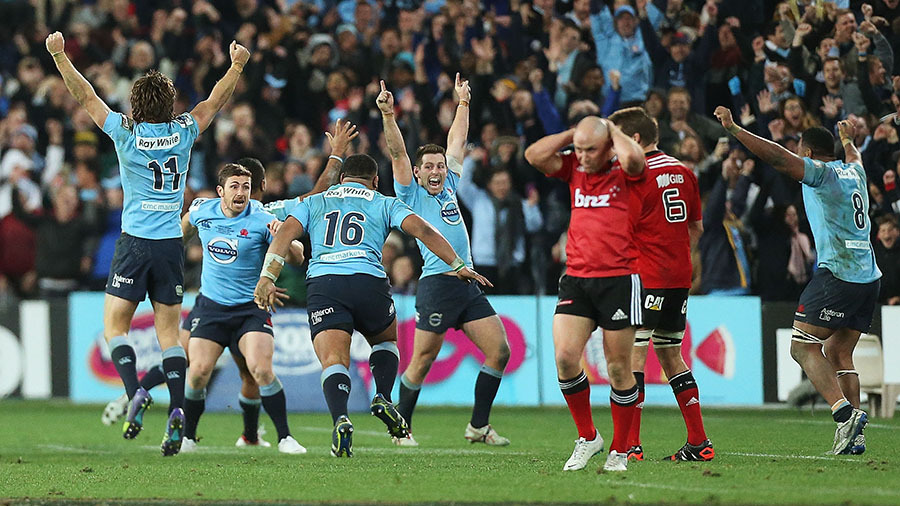
Pure joy: The Waratahs celebrate their first Super Rugby title © Getty Images
Enlarge
The Super Rugby season has come to an end with New South Wales Waratahs deserving champions having previously proved themselves the best team home and away during the minor premiership. The Brumbies joined the Tahs in the finals series, and they pushed the champions to the limits in the semi-finals having defeated the Chiefs in a grand final rematch. Western Force, Melbourne Rebels and Queensland Reds were all disappointed to miss out on the final series, the Force only in the final round of home-and-away matches. Greg Growden runs his rule over each Australian team's Super Rugby 2014 campaign. 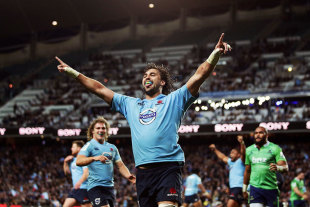
Jacques Potgieter was the best recruitment of 2014
© Getty Images
Enlarge
WaratahsA stellar season, and they succeeded in fulfilling their plan of achieving the franchise' first Super Rugby title. They succeeded with a mixture of hard work, fine planning, excellent recruitment, smart selections, and a game plan that had the desired effect of bringing back the crowds. Michael Cheika said two years ago that he wanted to bring back pride to the Waratahs' brand - and that has happened. The most crucial factor in the Waratahs transformation is that Cheika at last got the squad fit. For too long, the Waratahs had a reputation for slackening off both in preparation and in the final stages of games. So Cheika flogged them to the extent that no team could match them in preparation, and with it they became masters of finishing off games so well. The Super Rugby final was another example of the team holding firm until the final seconds. They also overcame major setbacks, with the loss of their captain, Dave Dennis, shortly before the finals adequately covered by Michael Hooper, who led them well during the final month of the tournament. And they did it with so much style - even using the final as a way of explaining that for them the running game is the only game. Let's hope the other Australian teams follow their example. Mark: A plus (upgraded from A issued after the home-and-away season) 2013 mark: C plus
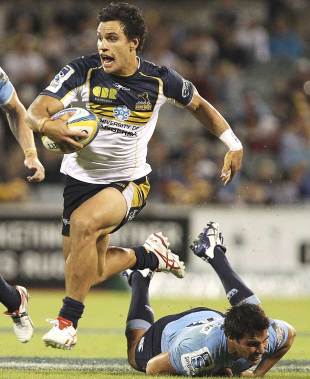
Matt Toomua has transformed the Brumbies back to their attacking best
© Getty Images
Enlarge
BrumbiesJake White produced such a dominant shadow over the Brumbies during his time at the province, so it was always going to take some time for the new coaches - Stephen Larkham and Laurie Fisher - to show off a change in philosophy. But it did happen. The longer the season went, the more the Brumbies played with freedom; and they succeeded in playing some enlightening football, especially when Matt Toomua was given space. Overall it was a very encouraging season for Larkham, as the Brumbies were again worth watching, but next year will be the real test as he will be without Fisher, who is heading overseas. Fisher is a major loss to Australian Rugby. They did threaten the Waratahs during the semi-final, but the hometown defence proved impenetrable. The departure of Ben Mowen will see some back-row tinkering next season, and that could work in the favour of the team as they sometimes lacked the required thrust at the breakdown to be a constant threat. Scott Fardy needs more determined Brumbies soldiers hovering with him. Mark: B plus 2013 mark: B plus
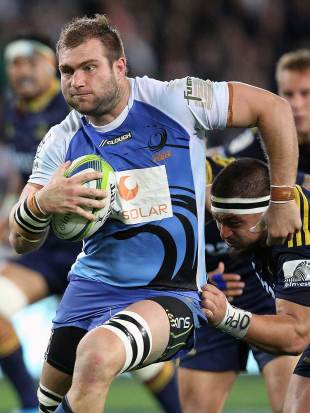
Ben McCalman was one of the Force's workhorses
© Getty Images
Enlarge
Western ForceConstructive coaching revolves around getting the most out of your resources - no matter how vast or limited. And Michael Foley certainly did that with the Force. He didn't have much to work with. Virtually all of the stars have left the Force, with the province now relying on diligent workers and journeymen. Their biggest asset is heart, and Foley focused on that - providing a restrictive game plan that made the most of the province's down-market skill base. Rely heavily on defence, especially in your own quarter, kick away the bulk of your possession, and attempt to cage your opponents close to their own line - preying on any mistakes or indiscretions. It wasn't appetising to watch, often tedious, but it had the desired effect of destabilising better opponents. So, many fell into the Force trap, prompting an unexpected late charge towards the finals. The Force relied heavily on their core performers. Their back-row was among the most functional in the competition, with both Ben McCalman and Matt Hodgson excelling; no players in the Super Rugby had a higher work rate than those two, while Alby Mathewson, when available, and Sias Ebersohn ensured the Foley game plan was adhered to precisely. Mark: B 2013 mark: C
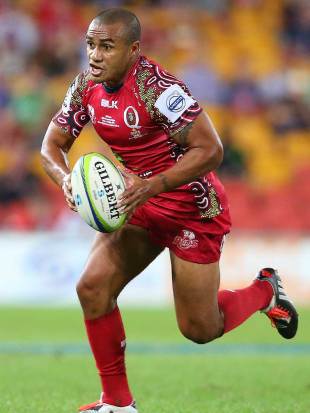
The Reds struggled without Will Genia and Quade Cooper
© Getty Images
Enlarge
Queensland RedsIt hasn't taken long for the Reds to degenerate into a mess. The halcyon days of 2011 are long gone, and coach Richard Graham is under enormous pressure to hang onto his position. Once the strongest and most committed Australian province, Queensland are now a divided bunch, with endless whispers during the season over dissension in the ranks. Graham has failed to gain the level of respect with the players that Ewen McKenzie had with them. The absence of Quade Cooper and Will Genia for extensive periods of the season through injury did not help, but the pack's lack of focus was a key factor in the Reds losing their way. Their back-row play was well below average, and numerous forwards became near ghosts during the season. They are in desperate need of quality men up front. There was just not enough impact made by the squad's back-rowers during the season, while high-profile forwards such as James Horwill and Rob Simmons drifted in and out of form. Their backline was often impotent, and the team's handling skills disintegrated the longer the season went on. When the most loyal supporter base in the country - the Reds' former players - starts being openly vicious, complaining the team lacks spirit, it is a sure sign that something drastic has to happen to get the Reds back on track. Mark: F 2013 mark: B
Melbourne RebelsAt least the Rebels aren't fighting each other any more on overseas trips, but the campaign was still well short of satisfying for the struggling fifth Australian franchise. It all began with considerable promise, but the longer the season continued the more obvious were their faults. The Rebels relied too heavily on their skipper, Scott Higginbotham, and there wasn't anyone who could pick up the slack when he was unavailable. There was always a sense of uncertainty hovering over this promise, especially with the Australian Rugby Union having to bankroll them after their private owner, Harold Mitchell, decided to move on. But at least to their credit they spent the latter part of the season to good use, securing some reasonable signings for 2015 - including Reds utility back Mike Harris. Bryce Hegarty was the team's most consistent performer in 2014, and he is worth pursuing with at No.10. Nonetheless they always looked two or three players short of a competitive line-up, and certainly need to do something to bolster their lacklustre attack. No wonder they've been recruiting hard.

Bryce Hegarty was the most consistent performer for 2014 © Getty Images
Enlarge
Mark: D 2013 mark: D minus © ESPN Sports Media Ltd
|
Live Sports
Communication error please reload the page.
-
Football
-
Cricket
-
Rugby
-
- Days
- Hrs
- Mins
- Secs
F1 - Abu Dhabi GP
Abu Dhabi Grand Prix December 11-131. Max Verstappen ()
2. Valtteri Bottas (Mercedes)
3. Lewis Hamilton (Mercedes)
4. Alexander Albon ()
5. Lando Norris ()
6. Carlos Sainz Jr ()
-
ESPNOtherLive >>
Golf - Houston Open
Snooker - China Open
Tennis - Miami Open

